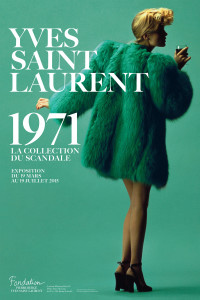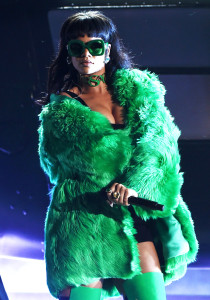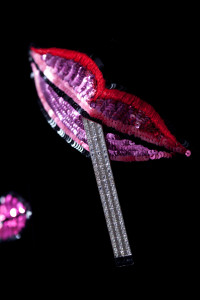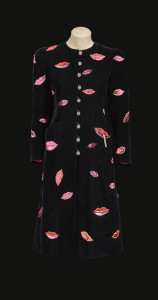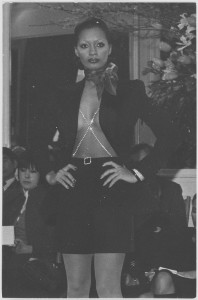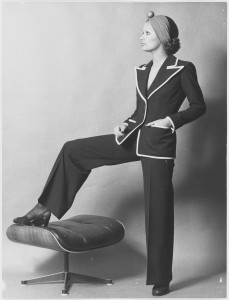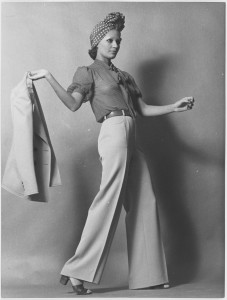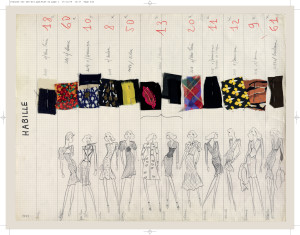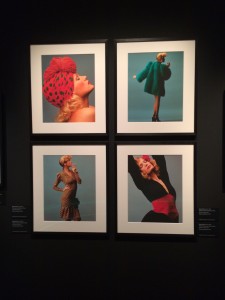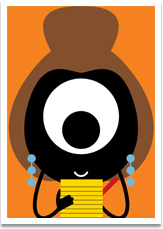When I saw a picture of Rihanna wrapped in grass-green fur, I had a sharp intake of breath. I had just walked out of an Yves Saint Laurent exhibition in Paris where the designer’s green fur chubby from 1971 was at the heart of the story about YSL’s The Scandal Collection.
And here was one of the coolest current performing artists embracing the self-same look from Versace.
What is it about the Seventies which were once described as “the era that taste forget” yet seem to be at the beating heart of current style?
Rihanna may not have “back home” the avocado-green bathroom and mustard curtains that were the Seventies incarnate. But there was hardly a show in Milan for the summer 2015 season without ginger suede jackets, fringed bags, platform sandals and those Bohemian-chic shawls – all far more expensive that the original pieces picked up on the hippy trail.
At the Fondation Pierre Bergé -Yves Saint Laurent, I absorbed everything about that Seventies era – except why it happened – at their exhibition on YSL’s Scandal Collection, which was presented January 29, 1971.
I sat mesmerised in front of the screen watching a film showing the reaction to the Yves Saint Laurent outfits from 1971: the famous “smoking” or tuxedo outfit through to the black coat embroidered with scarlet lips, one pair gripping a crystal cigarette.
Until I saw the exhibit, I had not realised the extent of shock and rage, especially among the French, who saw the show as digging up the divisive war years.
The Saint Laurent working drawings – showing the firm, mannish shoulders in an era when fashion was following the floaty hippy look – was only the beginning. Although many of the clothes seemed elegant to modern eyes, the press quotes about the show suggested the opposite.
“Sad reminder of Nazi days – French press attacks Yves,” said the Associated Press in Paris on February 1, 1971. While “Saint Laurent truly hideous” was the now famous riposte in the International Herald Tribune on January 30, 1971.
The ultimate critique of the show by fashion editor Alison Adburgham read like this: “Saint Laurent spared us nothing. His collection was a tour de force of bad taste… nothing could exceed the horror of this exercise in kitsch. …Shoulders were exaggerated, built out, extended with stiffened epaulettes… Sometimes the jackets went with long trousers… The ‘smokings’ went with shorts, and when the jackets were unfastened, they were worn next to the skin, with no bra. Sometimes, there was a little chiffon blouse which, nonchalantly draped, seemed to underline the nakedness…”
I cannot think of any other fashion review when the editors seemed so shocked. I was as intrigued by the vicious comments as by the photographs of that era, showing the turban headscarves, the ochre prints and the “Y” for Yves shape of jackets, whose sharp shoulders symbolised feminists challenging the male.
The three films also stayed with me. They included a French TV report of that era and a German pastiche of a Paris fashion show that looked like something out of a Berlin night club.
The one thing I did not learn from all this was the genus of the 1971 collection. Was it, as Saint Laurent’s partner Pierre Bergé suggested in the programme notes, because Paloma Picasso had trawled through the Paris /puces/ or flea markets and showed up at the couture studio in a Forties dress with a scarf twisted into a turban – and set off the idea in her friend Yves?
Yet I had heard from the designer himself, before he died in 2008, a completely different story: that he had delved into his childhood memories of his mother in the war years in north Africa, walking along the beach to a bar where the soldiers would meet. And little Yves ran after her, crouching at her feet as she crossed her platform soled shoes and tossed the polka-dot skirt of a dress with sharp shoulders.
So many other designers, such as Christian Dior, have looked into the memories of their early years – and especially their mother’s closets. So is that the explanation of the current revival of the late Seventies and early Eighties? That it is the current generation of designers looking back to their own early childhood?

